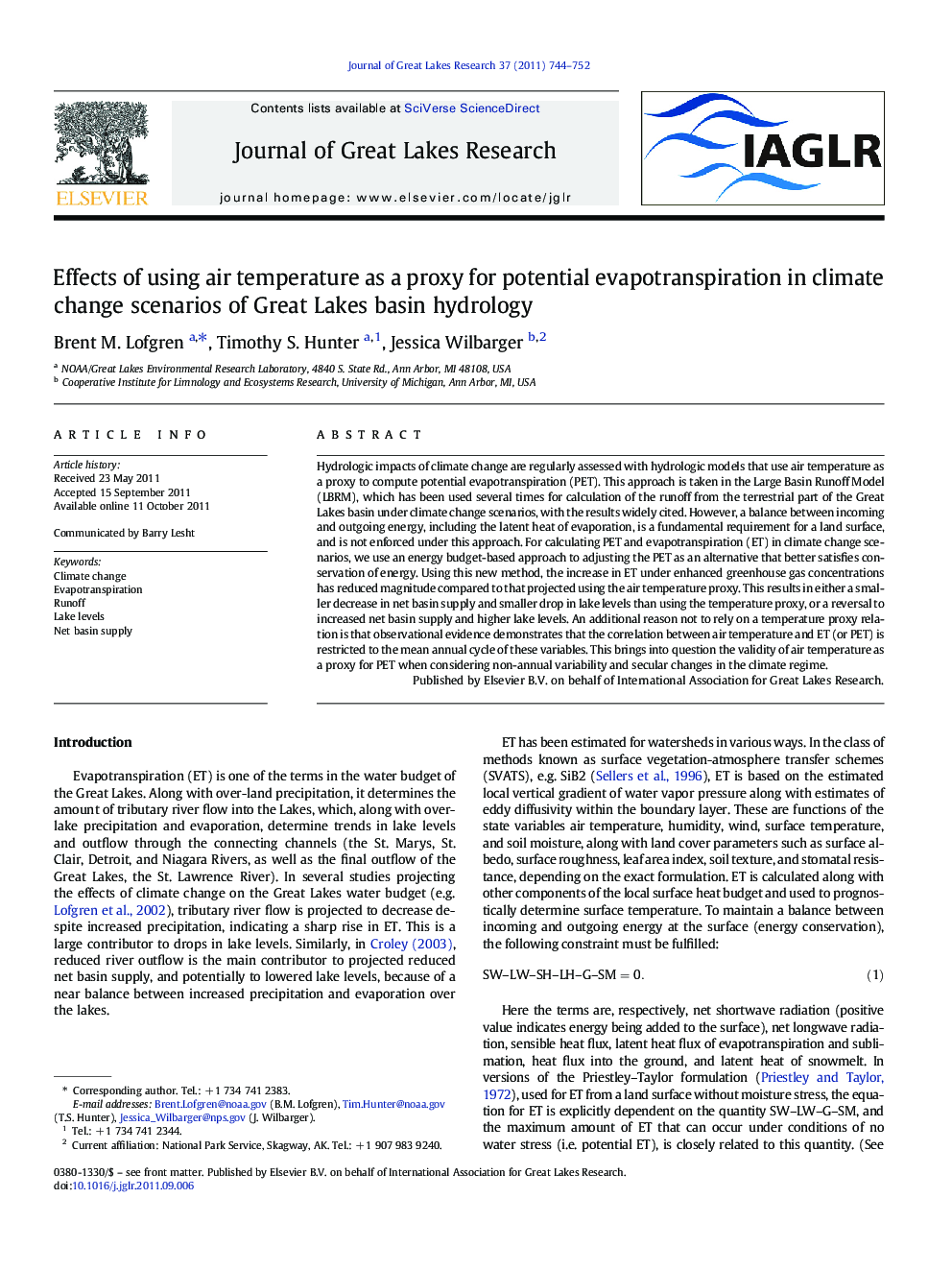| Article ID | Journal | Published Year | Pages | File Type |
|---|---|---|---|---|
| 4398695 | Journal of Great Lakes Research | 2011 | 9 Pages |
Abstract
Hydrologic impacts of climate change are regularly assessed with hydrologic models that use air temperature as a proxy to compute potential evapotranspiration (PET). This approach is taken in the Large Basin Runoff Model (LBRM), which has been used several times for calculation of the runoff from the terrestrial part of the Great Lakes basin under climate change scenarios, with the results widely cited. However, a balance between incoming and outgoing energy, including the latent heat of evaporation, is a fundamental requirement for a land surface, and is not enforced under this approach. For calculating PET and evapotranspiration (ET) in climate change scenarios, we use an energy budget-based approach to adjusting the PET as an alternative that better satisfies conservation of energy. Using this new method, the increase in ET under enhanced greenhouse gas concentrations has reduced magnitude compared to that projected using the air temperature proxy. This results in either a smaller decrease in net basin supply and smaller drop in lake levels than using the temperature proxy, or a reversal to increased net basin supply and higher lake levels. An additional reason not to rely on a temperature proxy relation is that observational evidence demonstrates that the correlation between air temperature and ET (or PET) is restricted to the mean annual cycle of these variables. This brings into question the validity of air temperature as a proxy for PET when considering non-annual variability and secular changes in the climate regime.
Related Topics
Physical Sciences and Engineering
Earth and Planetary Sciences
Earth and Planetary Sciences (General)
Authors
Brent M. Lofgren, Timothy S. Hunter, Jessica Wilbarger,
